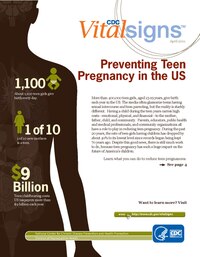
Photo from wikipedia
BackgroundTeenage pregnancy is a serious public health and social problem, with 95% occurring in developing countries. The aim of the study was to investigate the behavioural, familial and social factors… Click to show full abstract
BackgroundTeenage pregnancy is a serious public health and social problem, with 95% occurring in developing countries. The aim of the study was to investigate the behavioural, familial and social factors associated with teenage pregnancy among girls aged 13–19 years in Lira District, Uganda.MethodsPrimary data from a case-control study of teenage girls (aged 13–19 years) in Lira District, Uganda was analysed. A Structured questionnaire was administered using face-to-face interviews to collect data on 495 participants, identified through simple random sampling from 32 villages in two counties in Lira District. Data analyses were done using SPSS Statistics 23 for descriptive, bivariate (i.e. Chi-square tests) and multivariable analyses (i.e. logistics regression) used for determining independent associations.ResultsA total of 495 teenage girls participated in the study, however, final analyses were undertaken for 480 respondents. At bivariable analysis, all variables except alcohol consumption were significantly associated with teenage pregnancy. Among the behavioural factors assessed, multivariable analyses showed that having multiple sexual partners, frequent sex and irregular contraceptive use increased the likelihood of teenage pregnancy. Among familial factors, being married was found to increase the likelihood of teenage pregnancy. Peer pressure, sexual abuse and lack of control over sex was observed to increase the likelihood of teenage pregnancy.ConclusionsDemographic, behavioural, familial and social factors are important predictors of teenage pregnancy in Lira District. Interventions focussing on: retaining pregnant and married girls at school, information on sexual and reproductive health of teenage girls, improving access to and information about contraceptive use among teenage girls, improving socio-economic status of households, and law enforcement on sexual abuse among girls may come a long way to improving adolescent sexual and health services in the low-income settings.
Journal Title: BMC Pregnancy and Childbirth
Year Published: 2019
Link to full text (if available)
Share on Social Media: Sign Up to like & get
recommendations!